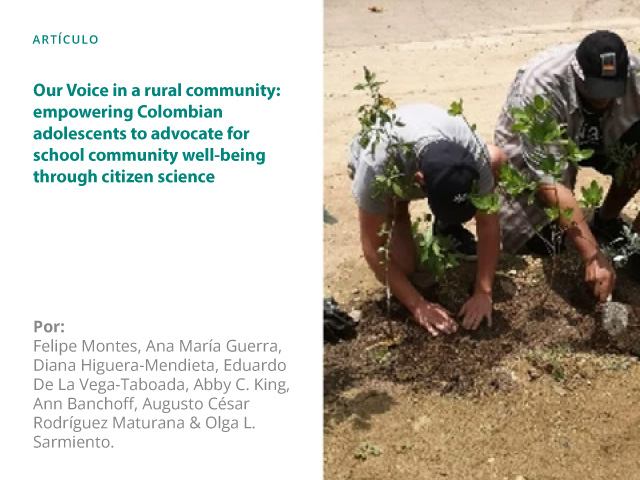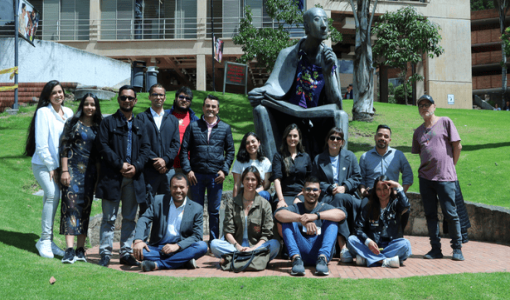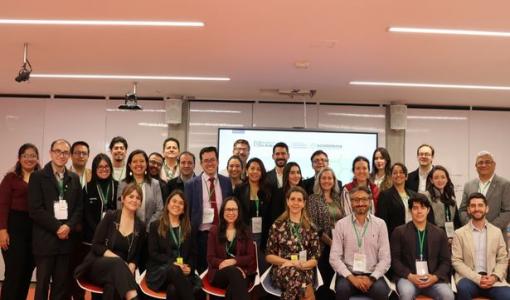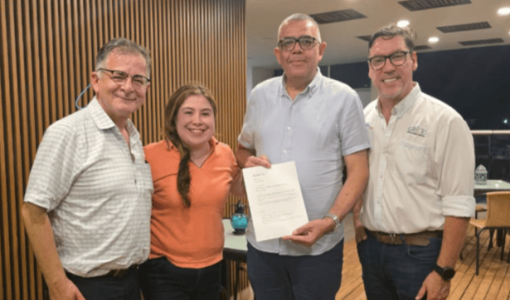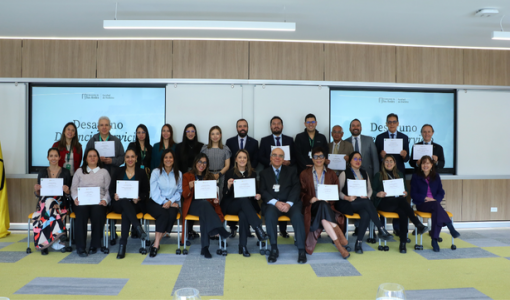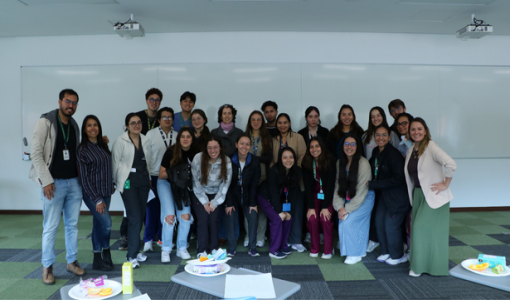[Artículo]
La Dra. Olga Lucía Sarmiento nos comparte un nuevo artículo donde participó llamado "Our Voice in a rural community: empowering Colombian adolescents to advocate for school community well-being through citizen science".
Abstract
Background
Santa Ana is home to an Afro-descendant rural population of the island of Barú in Cartagena, Colombia. While a popular area for tourism, Santa Ana’s population is affected by multidimensional poverty, precarious work conditions, homelessness, broken streets and sewer systems, limited quality education, and a lack of recreation and sport spaces. While Santa Ana’s Community Action Board aims to unify efforts and resources to solve these problems, the state’s capacity to meet the requirements of the Board is limited.
Methods
We evaluated the relationship between healthy lifestyles and characteristics of Santa Ana’s school using the Our Voice Citizen Science Research Method. This systemic approach combines information and communication technologies with group facilitation to empower adolescents to: 1) collect and discuss data about factors in their local environments that facilitate or hinder well-being within their school community; 2) identify relevant local stakeholders who could help to address the issues identified; and 3) advocate collectively for local improvements to support increased well-being at a community level.
Results
Eleven citizen scientists ages 13 to 17 years from the science club of Institución Educativa Santa Ana were recruited and together conducted 11 walks within the school to collect data about the facilitators and barriers to student well-being. They identified barriers to well-being related to school infrastructure, furniture, bathrooms, and sense of belonging. They then advocated with school stakeholders and reached agreements on concrete actions to address identified barriers, including fostering a culture among students of caring for school property and presenting their findings to the community action board. This methodology allowed the community to realize how students can become agents of change and take collective action when motivated by solution-oriented methodologies such as Our Voice. Project ripple effects, including greater empowerment and participation in collective actions by students, also were observed.
Conclusions
This study underscores the importance of the school’s built environment in the well-being of students in rural areas. The Our Voice method provided the opportunity to inform school-based interventions, and promoted ripple effects that expanded productive dialogue to the community level and generated systemic actions involving actors outside of the school community.

